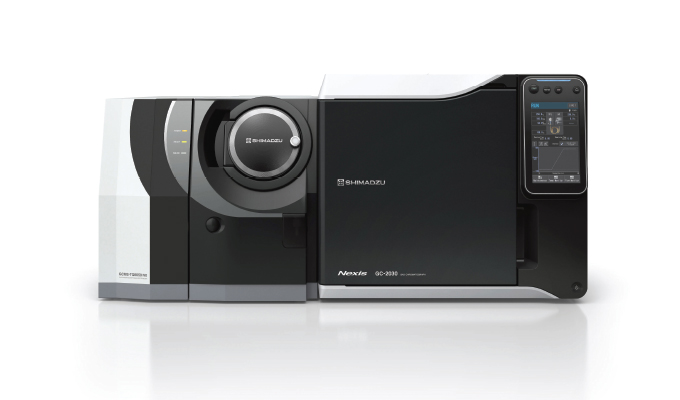Shimadzu Scientific Instruments and PACE Analytical Services have developed an alternate test procedure (ATP) to EPA Method 1613B—PAM-16130-SSI: Determination of 2,3,7,8-substituted tetra- through octa-chlorinated dibenzo-p-dioxins and dibenzofurans (CDDs/CDFs) using Shimadzu gas chromatography mass spectrometry (GC-MS/MS).
This ATP allows the use of GC-MS/MS in place of high-resolution mass spectrometry (GC/HRMS) for the determination of 2,3,7,8 tetra- through octa-chlorinated dibenzo-p-dioxins and dibenzofurans in wastewater, fish tissue, and soils. PAM-16130-SSI uses a Shimadzu GCMS-TQ8050NX triple quadrupole GC-MS/MS with a boosted efficiency ion source (BEIS) and multiple reaction monitoring (MRM) in place of the GC/HRMS used in EPA Method 1613B to identify the target analytes in the presence of other organic contaminants. This new procedure addresses the challenge of using GC/HRMS instruments, including the high cost to purchase and maintain and difficulty in obtaining parts from manufacturers.
ENHANCED SENSITIVITY ENABLES ULTRA-TRACE LEVEL ANALYSIS
The Shimadzu triple-quad GCMS-TQ8050 NX is capable of performing unprecedented quantitative GC-MS/MS analyses of ultra-trace amounts, down to the femtogram level. Equipped with a new, highly efficient detector and three forms of noise-reduction technologies, the GCMS-TQ8050 NX has never been more important in industries such as food safety, cannabis testing, forensics, and more.
To maximize the benefits of the off-axis ion optics, the system features three noise-reduction technologies and a detector with improved amplification performance. Due to these state-of-the-art technologies, the system can reliably detect ultra-trace femtogram-level quantities of ions. The resulting exceptional analytical sensitivity and robustness increase the value of solutions and open the door to new applications.
HIGH-EFFICIENCY DETECTION
The GCMS-TQ8050 NX detects peaks more reliably than the GCMS-TQ8040 NX, even for substances with fewer ions reaching the detector. That means it can reliably analyze femtogram-level concentrations with fewer ions.
Installing two lenses (overdrive lenses) in front of the electron multiplier reduces random noise from helium or argon and improves S/N. Applying voltage to the lenses improves S/N levels by reducing noise near the lenses and helping to focus the ions that pass through the mass filter (Patent No. US6737644).
A NEW LEVEL OF DATA STABILITY
The superior data stability with the GCMS-TQ8050 NX provides sensitivity that rivals high-resolution GC-MS analysis. This powerful new analytical instrument reliably identifies peaks even for trace quantities of dioxins and other substances previously considered difficult to analyze using a quadrupole GC-MS system.
Due to their tendency to resist degradation and remain inside organisms, the use of PFOS, PFOA, and other long-chain perfluorinated chemicals (PFCs) is increasingly being restricted. Because perfluorooctanesulfonamide and telomer alcohol have been identified as potentially breaking down to PFOS or PFOA, they have attracted attention as compounds that should be monitored in the environment, which involves monitoring trace concentrations.
GOING BEYOND EXISTING STANDARDS
All the sample preparation, extraction, and clean-up steps in Method 1613B are included in the ATP, which means the matrix-specific extraction procedures in both methods are the same. In both methods, each sample is spiked with the same suite of carbon-labeled standards prior to extraction, and those standards are used for isotope dilution quantitation in the same way. All the relevant quality control acceptance criteria are the same in both methods as well.
PAM-16130-SSI is slated to be proposed for nationwide approval. In the interim, laboratories may obtain approval to use this method instead of EPA Method 1613B from their regulatory authority or regional ATP coordinator.
IMPROVING PERFORMANCE WHILE LOWERING COSTS
Approval of this GC-MS/MS method for measurement of PCDDs/PCDFs has the potential to lower laboratory costs and expand the pool of available laboratories, while not compromising method performance. Other advantages of PAM-16130-SSI include:
No verification of mass accuracy required every twelve hours. Instead, a passing continuing calibration verification (CCV) at the end of the run is acceptable.
The GCMS-TQ8050NX enables a slow bleed of PFTBA into the system throughout the entire run without any additional hardware.
During validation, no recalibration was needed, even after instrument maintenance was performed or after running out of carrier gas.
Furthermore, use of Shimadzu’s automatic adjustment of retention time (AART) function for accelerating the retention time adjustments in acquisition and processing methods after significant column maintenance. This proprietary algorithm, which calculates linear retention indices based on constant linear velocity during the run, enables accurate, reproducible chromatographic separation with proper resolution of dioxins and furans after every column maintenance and with your original method.
Shimadzu Scientific Instruments (SSI) is the North American subsidiary of Shimadzu Corporation’s Analytical and Measuring Division. Headquartered in Columbia, Maryland, SSI offers a comprehensive portfolio of analytical and testing solutions for a broad range of applications in science and industry. SSI maintains a network of ten regional offices strategically located across the United States, with experienced technical specialists, service providers and sales engineers situated throughout the country. For more information, visit www.ssi.shimadzu.com.


